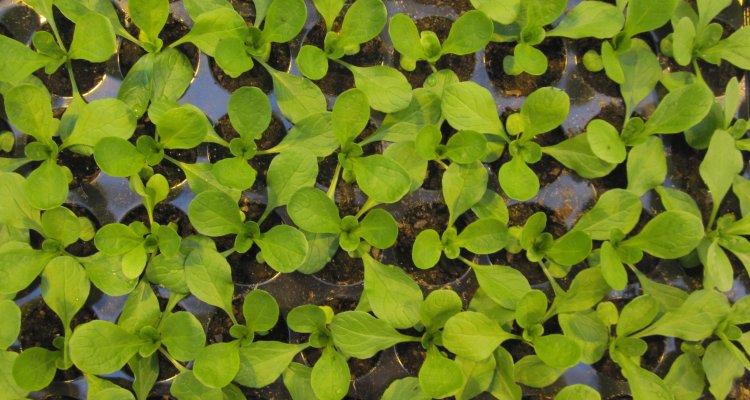
Regeneration of lamb’s lettuce
Seed dormancy
To break potential seed dormancy of cultivated lamb’s lettuce (Valerianella locusta) through cold treatment, seeds are placed at 5°C for 3 days after sowing.
Vernalization
Flowering is induced by overwintering the plants in a frost-proof greenhouse.
Sowing
Seeds of cultivated material are sown in seed trays during mid-November. After the dormancy-breaking treatment, the trays are placed at 20°C in the greenhouse for a period of 1-2 weeks. After full development of the cotyledons, seedlings are transplanted to small pots.
Planting
Plants are raised in the greenhouse at 16-18 °C for a period of 1 month. During this period, plants of sufficient size are transplanted to larger pots. Starting in January, overwintering takes place in a frost-proof greenhouse. Plants are supported by wooden stakes to prevent lodging. Homogeneous accessions are regenerated with 10 plants, while 20 plants are used for heterogeneous samples, such as landraces and wild species.
Pest and disease control
During the regeneration, plants are checked for the presence of pests and diseases, in particular aphids and fungi, and treated when necessary. After planting in the greenhouse, the plants are visually inspected several times by the Dutch Plant Protection Service for the presence of viruses. Only healthy plants are maintained for seed production.
Harvesting
Soon after the changing of the seed colour from green to yellow/brown and the start of seed shattering, above-ground plant parts are cut off and placed on a piece of cloth or plastic in the greenhouse until the majority of seeds have ripened. After sufficient ripening, seeds are carefully removed from the inflorescences and plant parts are discarded as much as possible. Subsequently, the seeds are dispersed on the cloth/plastic for further ripening and drying. Seeds are then collected in paper bags and transferred to the drying and cleaning facility. Flowering and seed production usually take place during May-June.